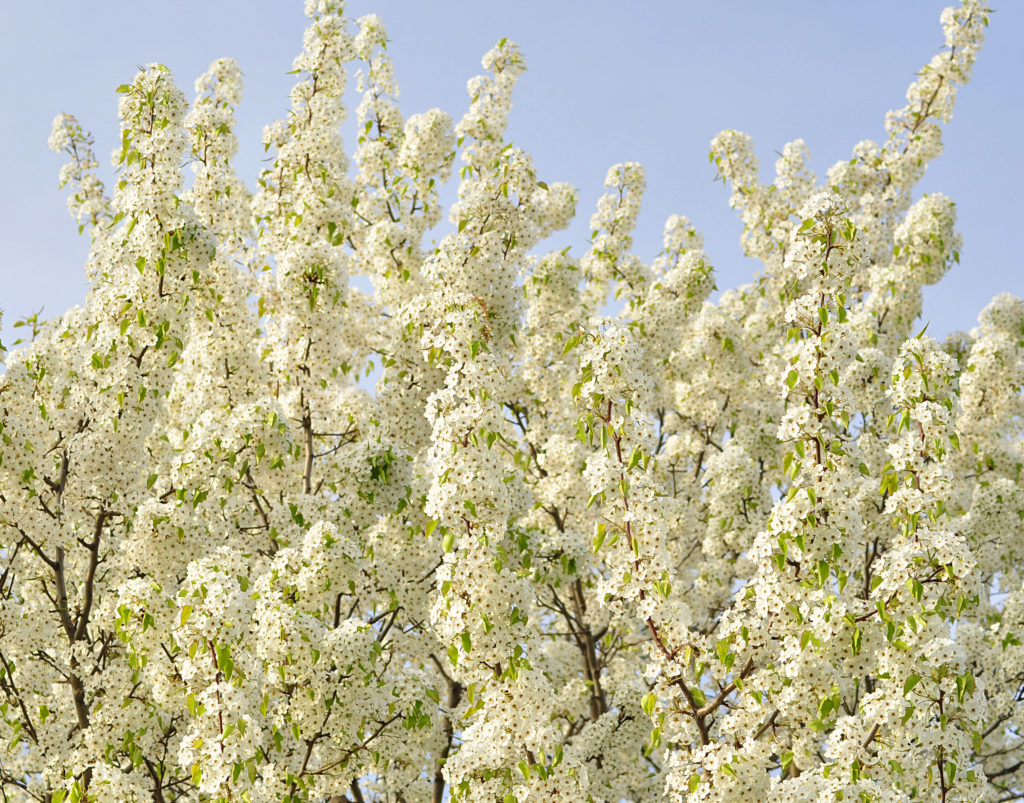Gardening for Health

Beware the Bradford Pear
By Maria Price
Has anyone noticed all the “wedding aisle” blooming white pear trees along Route 32 and 97?
Their dreamy white cloudlike blooms were cut short last week, with temperatures dipping into the 20s. Although beautiful when they come into bloom, they are one of the most invasive alien nightmare plants that are taking over many native forested areas.
They are known as Bradford pears or Callery pears (Pyrus calleryana). Their introduction to the U.S. goes back more than a century.
A new disease called fire blight was wiping out pear orchards. Adrian Higgins of the Washington Post writes in a 2018 article that at the turn of the 20th century, California and Oregon were the centers of pear production—a $10 million industry.
The Callery pear was first brought to the U.S. in 1908 because it was found to be resistant to fire blight and could potentially be used as rootstock for European pears. Frank Meyer, a Dutch-born plant explorer who worked for the USDA, collected Callery pear seeds in China in 1916. He noted the incredible adaptability of Callery pears to both arid and wet environments. The seeds that Meyer collected ended up at the U.S. plant introduction station in Glenn Dale, Md.
In the early 1950s, a horticulturalist, John Creech, began to see the Callery pear not as a rootstock for the common pear, but as an extraordinarily tough street tree. Creech trialed a pear seedling at University Park near D.C., and discovered it had great vigor and was free of diseases and pests. He named it after F.C. Bradford, the plant station’s head. Happy with their growth as shade trees, he officially released them to the nursery trade in 1960.
Each scion was genetically identical, but the rootstock each had its own DNA. The tree was considered sterile. They were planted by the millions across the country and it became the ubiquitous street tree all across America.
To improve weak branch structure, a new variety was introduced that crossed with the original Bradford pear. Creech and Ackerman had previously noticed that on some of the grafted trees where the scion failed, the rootstock suckered and bloomed, causing the sterile street trees to set viable fruit. Nancy Lowenstine, from Auburn University, noted that the trees produced seed at a young age and that the birds were spreading them.
The tree was not particularly invasive in China, but bringing it into an alien environment, selecting one for unnatural propagation, and fusing genetically different individuals together, and then planting it across the continent has made it a roving free-range freak.
CORRECTION: In last week’s column, the photo I submitted was not that of Chrysogonium virginianum but of the very invasive alien species Ranunculus ficaria, or lesser celandine. I apologize for the mistake—I purchased the plant many years ago and it has a very similar growth habit. Chrysogonium is in the Aster family, which I should have noticed. Thanks for spotting this, M.S. Sierra. You can teach old dogs new tricks.
